
How to Use 5V Adapter: Examples, Pinouts, and Specs
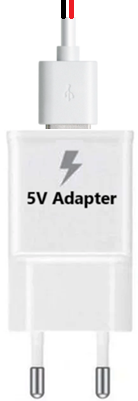
 Design with 5V Adapter in Cirkit Designer
Design with 5V Adapter in Cirkit DesignerIntroduction
The 5V Adapter is a power supply device designed to convert alternating current (AC) voltage from a standard wall outlet into a stable 5V direct current (DC) output. This component is widely used to power low-voltage electronic devices, including microcontrollers, sensors, single-board computers, and other peripherals. Its compact design and reliable performance make it an essential tool for hobbyists, engineers, and professionals working on electronic projects.
Explore Projects Built with 5V Adapter
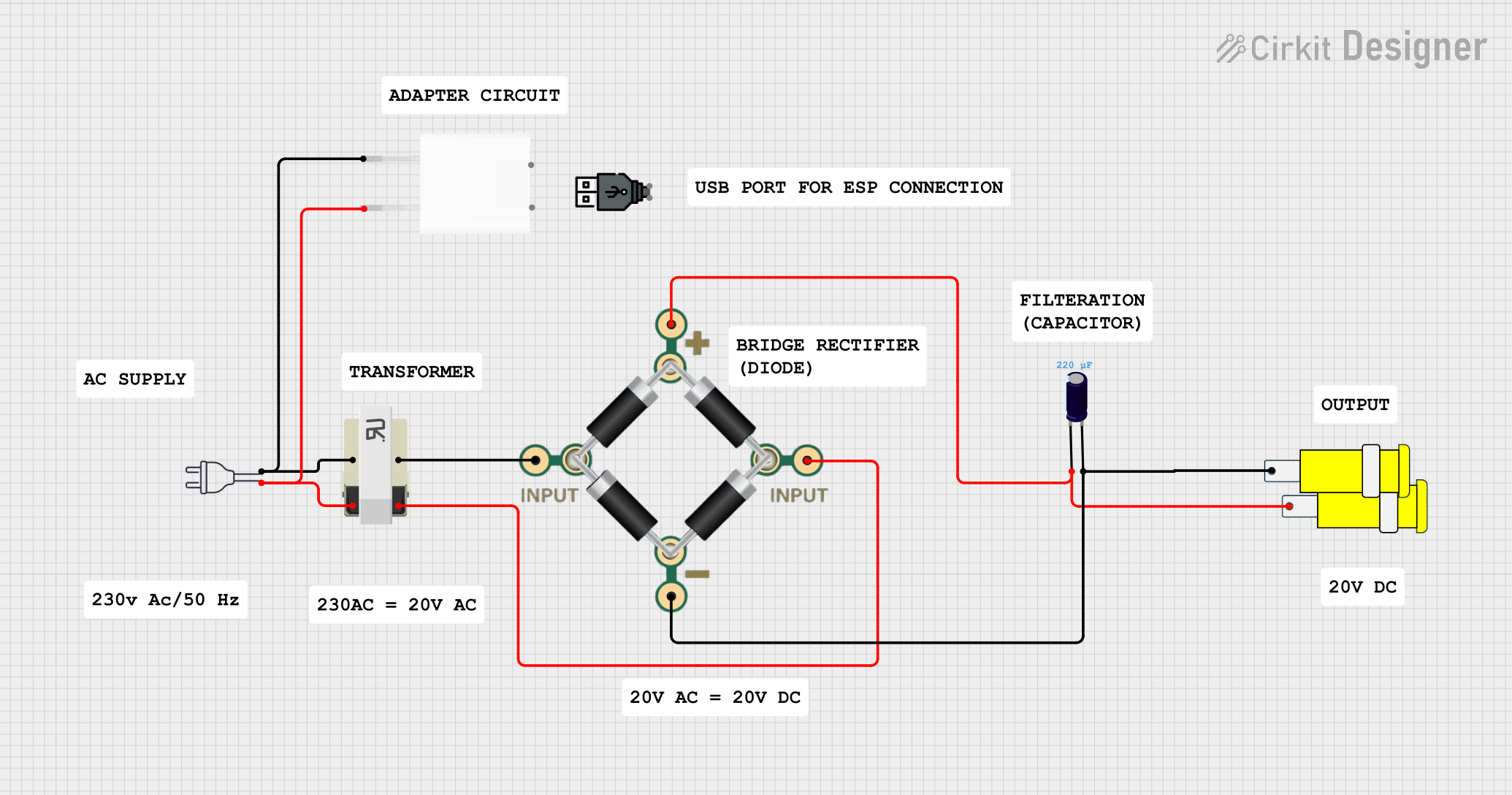
 Open Project in Cirkit Designer
Open Project in Cirkit Designer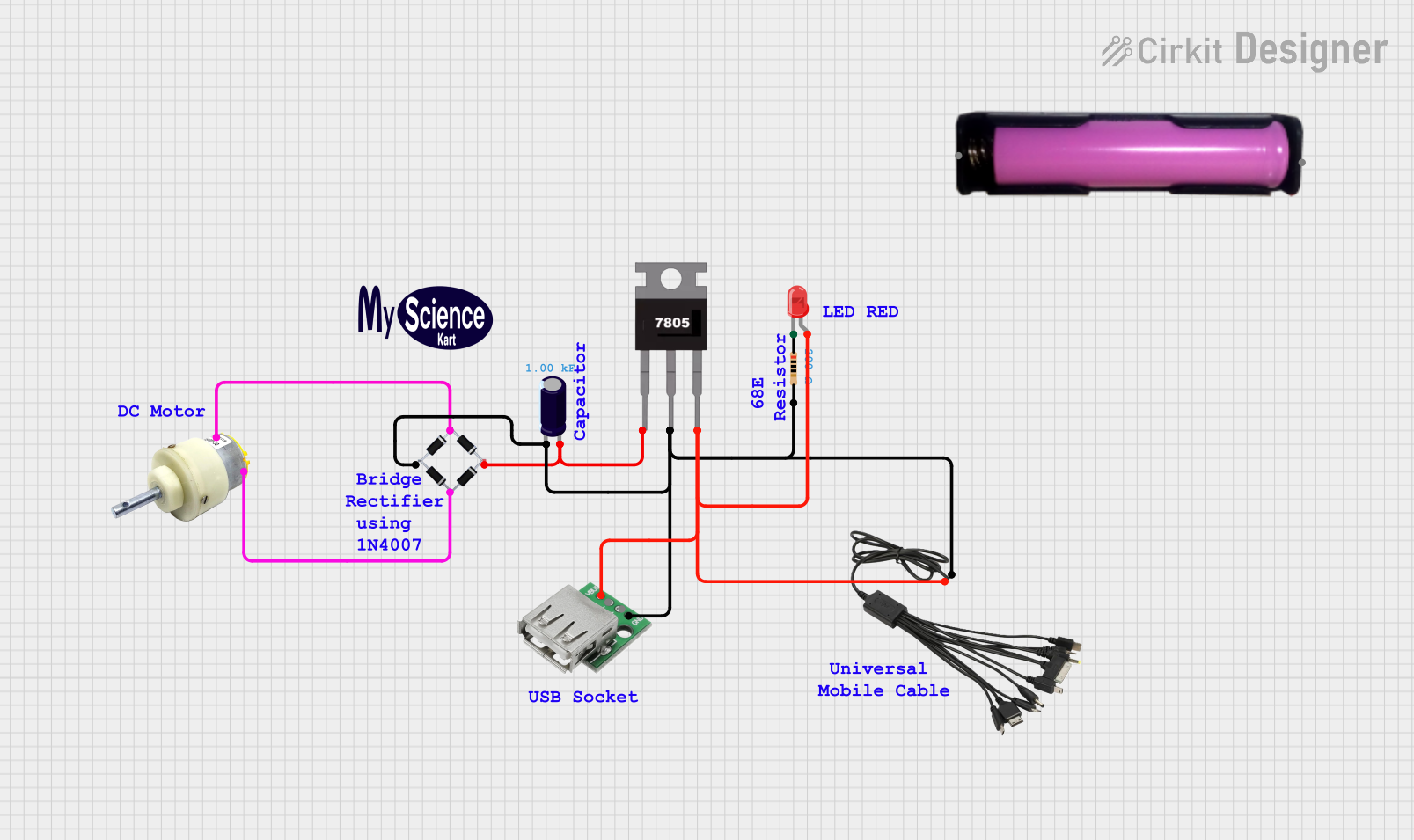
 Open Project in Cirkit Designer
Open Project in Cirkit Designer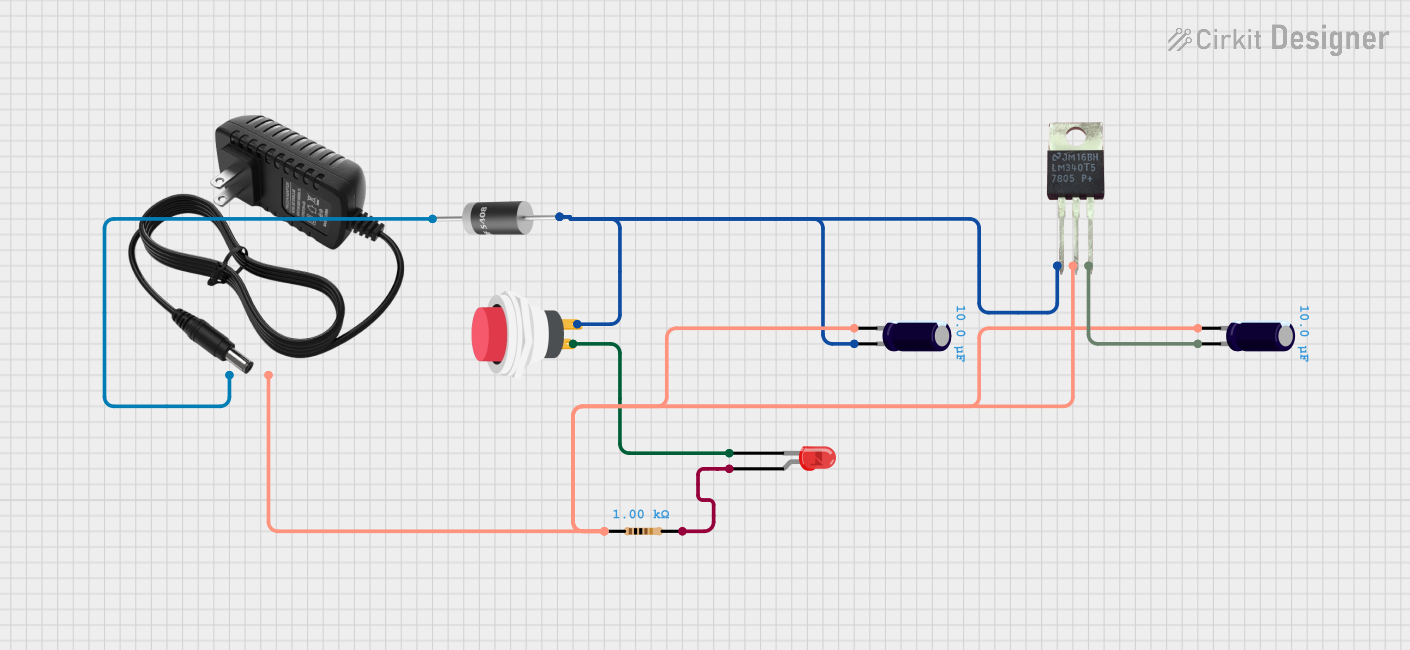
 Open Project in Cirkit Designer
Open Project in Cirkit Designer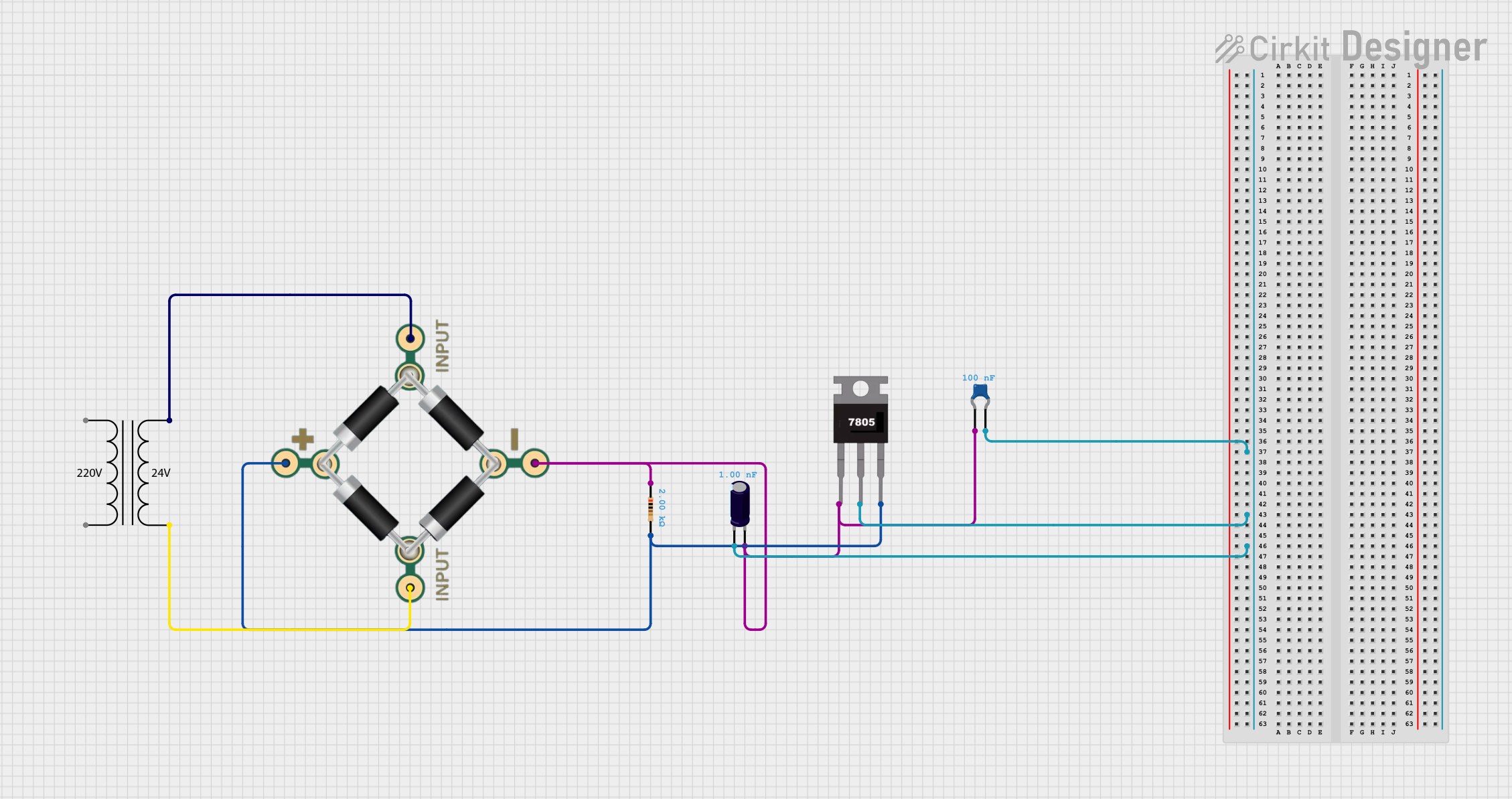
 Open Project in Cirkit Designer
Open Project in Cirkit DesignerExplore Projects Built with 5V Adapter

 Open Project in Cirkit Designer
Open Project in Cirkit Designer
 Open Project in Cirkit Designer
Open Project in Cirkit Designer
 Open Project in Cirkit Designer
Open Project in Cirkit Designer
 Open Project in Cirkit Designer
Open Project in Cirkit DesignerCommon Applications and Use Cases
- Powering microcontrollers such as Arduino, Raspberry Pi, and ESP32.
- Supplying power to sensors, modules, and small electronic circuits.
- Charging USB-powered devices.
- Providing a stable 5V DC source for prototyping and testing.
Technical Specifications
The following table outlines the key technical details of the 5V Adapter:
| Parameter | Specification |
|---|---|
| Input Voltage | 100-240V AC, 50/60Hz |
| Output Voltage | 5V DC |
| Output Current | Typically 1A to 3A (varies by model) |
| Power Rating | 5W to 15W (depending on current) |
| Connector Type | USB-A, USB-C, or barrel jack |
| Efficiency | ≥ 80% |
| Protection Features | Over-voltage, over-current, short-circuit protection |
Pin Configuration and Descriptions
For adapters with a barrel jack connector, the pin configuration is as follows:
| Pin | Description |
|---|---|
| Center | Positive terminal (+5V DC) |
| Outer | Ground (GND) |
For USB-based adapters, the pinout follows the USB standard:
| Pin | Description |
|---|---|
| VBUS | Positive terminal (+5V DC) |
| GND | Ground |
| D+ | Data line (not used for power) |
| D- | Data line (not used for power) |
Usage Instructions
How to Use the 5V Adapter in a Circuit
- Verify Compatibility: Ensure the device or circuit you are powering operates at 5V DC and does not exceed the adapter's current rating.
- Connect the Adapter:
- For barrel jack connectors, plug the adapter into the device's power input port, ensuring correct polarity.
- For USB-powered devices, connect the USB cable to the adapter and the device.
- Power On: Plug the adapter into a wall outlet and switch it on (if applicable). The device should now receive a stable 5V DC supply.
Important Considerations and Best Practices
- Check Current Requirements: Ensure the total current draw of your circuit does not exceed the adapter's maximum output current.
- Avoid Overloading: Overloading the adapter can cause overheating or damage.
- Use Proper Connectors: Match the adapter's connector type with your device's input port to avoid loose connections or damage.
- Ventilation: Ensure the adapter has adequate ventilation to prevent overheating during prolonged use.
- Polarity: For barrel jack connectors, verify the polarity (center positive or center negative) before connecting.
Example: Using a 5V Adapter with an Arduino UNO
The Arduino UNO can be powered using a 5V adapter via its barrel jack or USB port. Below is an example of powering the Arduino UNO and running a simple LED blink program:
Circuit Setup
- Connect the 5V adapter to the Arduino UNO's barrel jack or USB port.
- Connect an LED to pin 13 of the Arduino with a 220-ohm resistor in series.
Code Example
// Simple LED Blink Program for Arduino UNO
// This program blinks an LED connected to pin 13 every second.
void setup() {
pinMode(13, OUTPUT); // Set pin 13 as an output pin
}
void loop() {
digitalWrite(13, HIGH); // Turn the LED on
delay(1000); // Wait for 1 second
digitalWrite(13, LOW); // Turn the LED off
delay(1000); // Wait for 1 second
}
Troubleshooting and FAQs
Common Issues and Solutions
No Power Output:
- Cause: The adapter is not properly plugged into the wall outlet.
- Solution: Ensure the adapter is securely connected to the outlet and the device.
Device Not Powering On:
- Cause: The device's current requirements exceed the adapter's capacity.
- Solution: Use an adapter with a higher current rating.
Overheating:
- Cause: The adapter is overloaded or lacks proper ventilation.
- Solution: Reduce the load on the adapter and ensure it is placed in a well-ventilated area.
Intermittent Power:
- Cause: Loose connections or damaged cables.
- Solution: Check all connections and replace damaged cables if necessary.
FAQs
Q: Can I use a 5V adapter to charge my phone?
A: Yes, as long as the adapter's output current matches or exceeds your phone's charging requirements.
Q: Is it safe to leave the adapter plugged in when not in use?
A: Most modern adapters are designed to be energy-efficient and safe to leave plugged in. However, unplugging it when not in use can save energy and reduce wear.
Q: Can I use a 5V adapter to power multiple devices?
A: Yes, but ensure the total current draw of all devices does not exceed the adapter's maximum output current.
Q: How do I know if my adapter is damaged?
A: Signs of damage include no power output, unusual noises, or excessive heat. Replace the adapter if any of these occur.